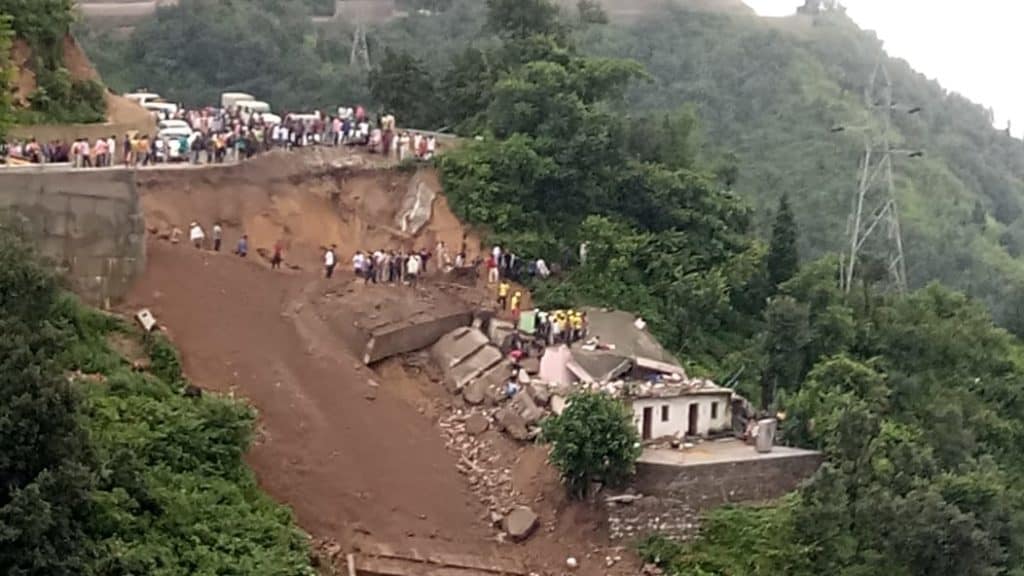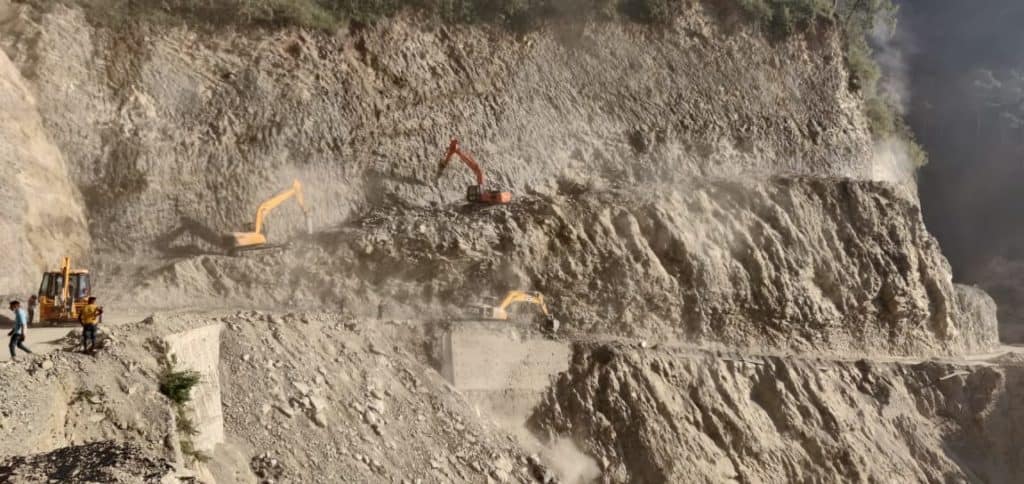This article is part of our special series Environmental Sustainability & Climate Change in Tier II cities supported by Climate Trends.
Climate change is not a new phenomena for the Himalayan State of Uttarakhand. In fact, the Indian Himalayan Region, comprising all the mountain states/UTs of India, has been at the forefront of climate change. Increased human activities, like unplanned construction, rampant tourism, increased waste generation, unsustainable transportation and more are resulting in rapid deterioration of the Himalayan landscape.
The ambitious 900 km Char Dham all-weather highway project is the new addition to this list.
The “Char Dham project is a typical example of hasty development.The project does not benefit the local population, “most of whom have lost their shops or agricultural land due to road expansion”, says Ayush Joshi, Uttarakhand based environmental engineer. He says the project is going to be catastrophic for Uttarakhand, and it has already triggered landslides at several places, with mud dumping rules flouted and trees cut.

Conservationists and experts have campaigned against the construction of Char Dham all weather highway project, starting from Rishikesh and linking all the four holy shrines (Kedarnath, Badrinath, Gangotri, Yamunotri) in the state. The project envisaged construction of a highway of 10m width. However, after much opposition and legal intervention sought by the Chairman of the High Powered Committee, the Supreme Court ordered the government to adhere to the 5.5 m width protocol while constructing the highway.

But, at many places, the hills have already been drilled and cut as per 10 m width protocol. For the same, SC in its order, asked the Ministry of Road Transport and Highways to mitigate the danger by planting trees and creating walking corridors for the pilgrims.
But the most is crucial issue here is; it is not just the larger environmental issues that are of concern but also the urban challenges that will arise in the region after the completion of the project.
Uttarakhand has been a tourist dependent state. From 2006 to 2017, income from tourism accounted for more than 50% of the state’s GDP. However, increased tourism has brought with it several environmental and urban planning related challenges for the state government and citizens. And, as the Char Dham project nears completion, these challenges will increase and have even wider ramifications on small towns that lie on the highway route. .
These have already started surfacing. For instance, the Gangotri glacier, which ensures water supply to Ganga, is blackening due to increased pollution levels caused by increase in forest fires and burning of fossil fuels.
As the number of tourists visiting the Char Dhams increase every year, so does the influx of vehicles, especially diesel vehicles. This is resulting in the settling of a particle known as Black Carbon, which absorbs sunlight and causes rapid depletion of the glacier. Any impact on Ganga will have deep impact on towns based on its banks of and alongside the Char Dham route like Rishikesh, Srinagar, Devprayag, Bagheswar.
“Given the fragility of Himalayas, the proposed highway would geologically impact the region very hard,” says Dr Anvita Pandey, Scientist at Centre for Ecology Development and Research (CEDAR) – working on water issues in Uttarakhand.
As she points out, tourism pressure would tremendously increase in small Himalayan towns like Rishikesh, Srinagar and other such places on the Char Dham route, which are already resource scarce. These places are pilgrimage towns, not tourist destinations. The highway will increase the tourism pressure several fold, for which these towns are not ready. Further construction of hotels and commercial buildings would hinder the ecosystem services that the rivers of these towns provide.
Presently, these towns are witnessing an unprecedented rise in levels of urbanization. Unplanned townships, rising quantities of waste, waste water, vehicles, lack of a sustainable public transport system are some of the immediate challenges facing these towns.
Rishikesh, a classic case study
The Ganga town of Rishikesh, which also happens to be the Yoga capital of the country and the starting point of Char Dham highway, is a perfect case study to understand these consequences.
Air pollution is one of the new problems in Rishikesh. For the period 2012 to 2017, Rishikesh has registered a sharp increase in the levels of PM 10 (inhalable particles, with diameters that are generally 10 micrometers and smaller). Rise in vehicles and waste burning are considered to be major reasons for this.
As of 2018, the city had more than 3000 diesel-based commercial vehicles which are more than 15 years old. And, it is estimated that in the next five years, 3197 more such vehicles will be added to this category.
To counter the problem, the state government had submitted a proposal in 2019 to the central government to ban these vehicles and phase them out. The government also proposed to increase the pollution monitoring stations from 10 to 20. The action plan also asks the Transport Department to increase surveillance checking by 10% every year. However, all these measures remain on paper.
Discharge of sewage directly to river Ganga remains another problem. As per the report on the Mission Namami Gange tabled in the Parliament in 2017, more than 54 MLD of untreated sewage was flowing directly into river Ganga from the holy cities of Haridwar and Rishikesh. Yet CPCB data from 2013, pointed out that 152 MLD of sewage is dumped every day directly in Ganga in Rishikesh alone.
Despite the ban on single use plastic materials in Rishikesh, the ghats in the city can be seen littered with plastic and other solid waste. Rampant construction of Ashrams alongside the river, to attract Yoga enthusiasts, has further exacerbated the problem of littering in the city.
Srinagar is the next major town (after Rishikesh) enroute to Char Dham, situated at a higher altitude than Rishikesh. The town lacks an adequate waste disposal systems. As a result of which open burning of waste and dumping into Ganga remains a common practice by city corporations.

Lack of parking places and traffic congestion is another cause to worry for towns like Rishikesh and Srinagar. The influx of tourists during the peak season skyrockets every year. The towns lying enroute to Char Dham lack adequate traffic handling infrastructure, having ill effects on carrying capacity and ecology of the region.
“While the big focus is on mobility, we are not discussing the ramification the Char Dham project will have on urban ecology of the several small towns situated on the highway,” says Anoop Nautiyal, Founder, SDC Foundation – working on urban issues in the state.
“On one hand we are talking about capping the number of tourists visiting the state and on the other we have this project which will give a major boost to the influx,” adds Nautiyal. “Increasing floating population will only add to our urban challenges and the state is currently not equipped to handle these.”
Nautiyal suggests intensive carrying capacity studies be done for the towns in order to address the challenges that will arise in the near future.
Also read: